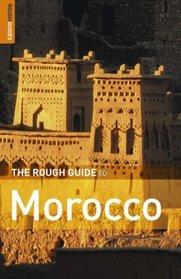Search -
Rough Guide to Morocco 7 (Rough Guide Travel Guides)
Rough Guide to Morocco 7 - Rough Guide Travel Guides
Author:
Introduction to Morocco For Westerners, Morocco holds an immediate and enduring fascination. Though just an hour’s ride on the ferry from Spain, it seems at once very far from Europe, with a culture – Islamic and deeply traditional – that is almost wholly unfamiliar. Throughout the country, despite the years of French and Spanish... more »
Author:
Introduction to Morocco For Westerners, Morocco holds an immediate and enduring fascination. Though just an hour’s ride on the ferry from Spain, it seems at once very far from Europe, with a culture – Islamic and deeply traditional – that is almost wholly unfamiliar. Throughout the country, despite the years of French and Spanish... more »
ISBN-13: 9781843533139
ISBN-10: 1843533138
Publication Date: 11/29/2004
Pages: 798
Rating: ?
ISBN-10: 1843533138
Publication Date: 11/29/2004
Pages: 798
Rating: ?
0 stars, based on 0 rating
Genres:
- History >> Africa >> Morocco
- Travel >> Africa >> General
- Travel >> Guidebook Series >> Rough Guide




